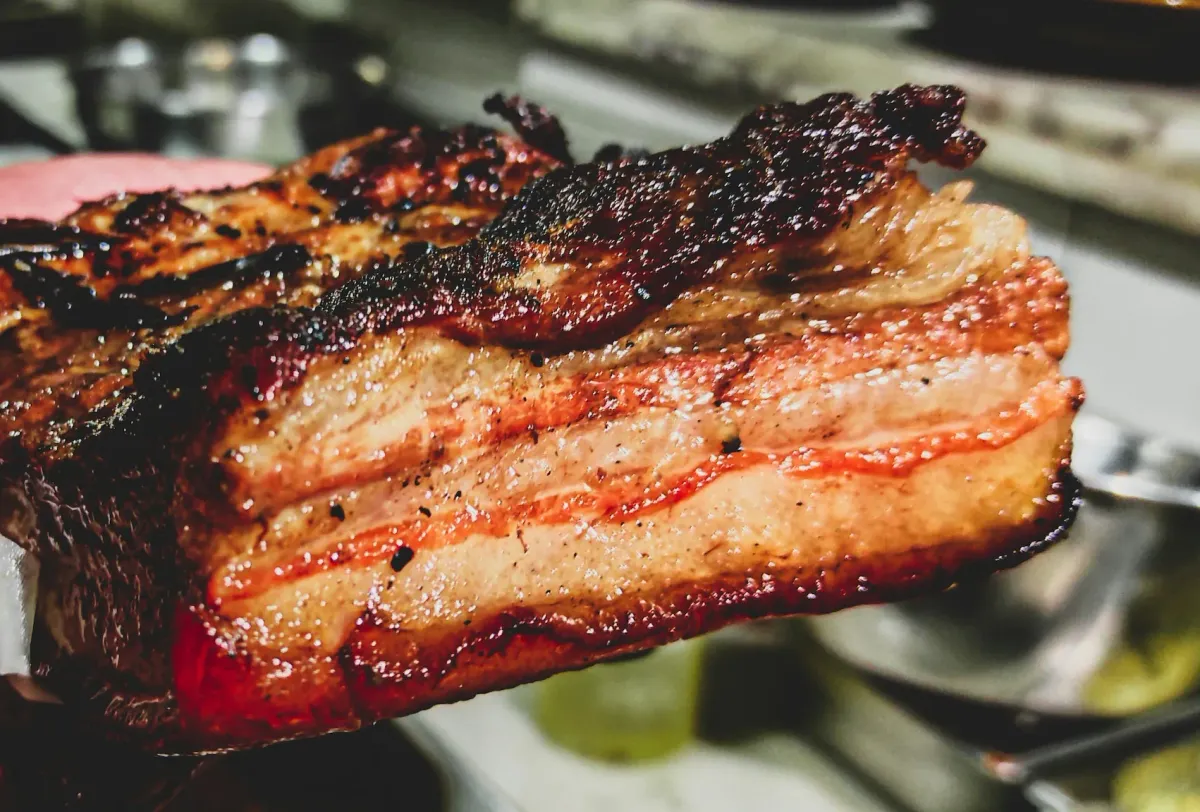How Do You Calculate the Calories from Fat

Understanding Fat in Your Diet
Fats are one of the three primary macronutrients, alongside carbohydrates and proteins, that are essential for maintaining overall health. They play a vital role in various bodily functions, including hormone production, nutrient absorption, and maintaining the structure of cells.
Fats pack a powerful punch when it comes to energy, delivering 9 calories per gram—more than twice the energy you get from carbohydrates or proteins. This makes fats a significant and efficient source of fuel for your body. This makes fats an essential part of a balanced diet, particularly for supporting metabolic functions and providing sustained energy.
However, not all fats are created equal. There are different types of fats, including saturated fats, polyunsaturated fats, and trans fats. Saturated fats, commonly found in animal products and certain processed foods, can raise cholesterol levels and contribute to heart disease when consumed in excess. In contrast, polyunsaturated fats, found in foods like nuts and fish, are considered heart-healthy and can help reduce the risk of cardiovascular disease. Trans fats, often found in fried and packaged foods, are known to have negative health effects and should be minimised in your diet.
Understanding the role of fats in your diet is crucial for making informed dietary choices. By learning how to differentiate between types of fats and how they contribute to your overall caloric intake, you can better manage your diet to support both general health and specific goals like weight management. Additionally, managing body fat is important for overall health and fitness, as reducing body fat can enhance body composition and improve metabolic health.
Reading Nutrition Labels
Nutrition labels give you important details about what’s in your food, including how much fat is in each serving, typically listed in grams. This information helps you understand what you’re eating and make healthier choices. These fat grams are crucial for understanding the total fat content in your diet and calculating your overall calorie intake. For instance, if a food item has 10 grams of fat in each serving, that would amount to 90 calories from fat, since each gram of fat contains 9 calories.
Understanding and interpreting these labels is essential for making informed dietary choices. By examining the nutrition label, you can determine the total fat grams, as well as the amounts of saturated fat and total calories in a food item. This information allows you to monitor your daily caloric intake and manage your fat intake to align with your health and nutrition goals.
When shopping, always check the nutrition label to ensure you are aware of what you are consuming. This practice helps in maintaining a balanced diet and avoiding the intake of excessive unhealthy fats. Additionally, you can visit our website to see the nutrition facts for various foods, which can further aid in tracking and managing your diet effectively.
You may explore nutrition labels with nutrition facts for different foods on our Nutrition facts page.

Calculating Calories from Fat
To figure out how many calories come from fat in a food item, just multiply the grams of fat by 9, since each gram of fat gives you 9 calories. This means that for every gram of fat in the food, there are 9 calories.
Fat calories are determined by multiplying the number of fat grams by 9. For example, if a food item contains 10 grams of fat, the calculation would be:
Fat grams (10) x 9 calories per gram = 90 calories from fat
This conversion factor is constant, regardless of the type of fat (whether it’s saturated, unsaturated, or trans fat). By calculating the calories from fat, you can determine how many calories you are consuming from fat in your diet, which is essential for managing your caloric intake and making informed dietary choices.
Use this simple formula to keep track of fat calories:
Fat grams x 9 calories per gram = Total calories from fat.
Understanding how to calculate calories from fat can help you better manage your nutrition, whether you’re aiming to lose weight, maintain your current weight, or simply improve your overall health.
Assessing Your Fat Intake
- Understanding total calories is crucial for assessing the percentage of calories from fat.
- To find the percentage of calories that come from fat, divide the calories from fat by the total calories and multiply by 100.
- This information can help you assess whether a food fits into your dietary goals.
- Assess your fat intake to determine if you need to make adjustments to lose weight or maintain weight loss.
- Use the formula: (calories from fat ÷ total calories) x 100 = percentage of calories from fat.
Balancing Fat Intake with Total Calories
Understanding your total calories is essential for evaluating the percentage of calories that come from fat in your diet. This can help you determine how well a particular food fits into your dietary goals, whether you’re trying to lose weight, maintain weight loss, or simply monitor your fat intake for overall health.
Maintaining a balance between calories consumed and energy expenditure is crucial for weight management. Regular exercise helps to offset the calories consumed from various macronutrients, ensuring that you maintain an energy balance to prevent excess fat storage.
To calculate the percentage of calories from fat, use the following formula:
(Calories from fat ÷ Total calories) x 100 = Percentage of calories from fat
For example, if a food item has 90 calories from fat and 200 total calories, you would calculate:
(90 ÷ 200) x 100 = 45% of calories from fat
This information can be crucial in assessing whether your fat intake aligns with your dietary goals. If you find that a large portion of your daily calories comes from fat, you may need to make adjustments, especially if you’re aiming to lose weight or maintain a healthy weight.
Regularly assessing your fat intake using this formula allows you to make informed decisions about your diet and helps ensure that you’re not exceeding the recommended fat intake for your health goals.
If you want to calculate your fat macros percentage try our TDEE and macro calculator
Tracking Your Progress
Keeping a food journal, such as using the FoodIntake app, can be a powerful tool for monitoring your fat consumption and making informed dietary adjustments. A food journal allows you to track your macros, identify patterns in your eating habits, and set specific goals to improve your nutrition.
By consistently logging your meals, you can track your daily caloric intake and fat intake, which provides valuable insights into whether your diet aligns with your health objectives. This can be especially helpful if you’re aiming to lose weight or manage your overall fat consumption for health reasons.
Consulting with a registered dietitian or nutritionist can offer personalized recommendations tailored to your unique needs, ensuring that your fat intake is optimized for your goals. They can help interpret your food journal data and suggest dietary adjustments that support your progress.
Regularly tracking your progress with a food journal or mobile app like FoodIntake enables you to see where you might need to make changes. Whether it’s adjusting your fat intake or modifying your overall diet, these tools provide the information you need to stay on track with your health and fitness goals.
Conclusion
Figuring out how many calories come from fat is simple and can give you useful insights into your food choices and how well-balanced your diet is in terms of macronutrients. By understanding how to calculate calories from fat, you can better assess whether your fat intake aligns with your health and fitness goals.
A healthy lifestyle is built on the strong foundation of a balanced diet combined with regular physical activity. Monitoring your fat intake is a crucial part of this balance. By being aware of the types and amounts of fats you consume, you can make smarter dietary choices that support your overall well-being and help you reach your fitness aspirations.
Use the information provided in this guide to accurately calculate calories from fat and make more informed decisions about your diet. This awareness can lead to better health outcomes and help you achieve a more balanced and nutritious diet.

Frequently Asked Questions:
How do you calculate calories from total fat grams?
To calculate calories from total fat grams, multiply the number of fat grams in a food item by 9, since each gram of fat provides 9 calories. For example, if a food item contains 10 grams of fat, you would calculate:
10 grams of fat x 9 calories per gram = 90 calories from fat
How many calories are in 1 g of fat?
There are 9 calories in 1 gram of fat. This is a standard measurement used to determine the calorie content of fat in foods.
What does it mean when it says calories from fat grams?
When a nutrition label indicates “calories from fat grams,” it refers to the number of calories that come specifically from the fat content of the food. This value is calculated by multiplying the total fat grams by 9, as each gram of fat provides 9 calories. Understanding this helps you determine how much of the food’s energy comes from fat, which can be important for dietary planning.
What percentage (%) of your daily calories should come from fats?
The percentage of your daily calories that should come from fats typically ranges between 20% to 35% of your total caloric intake. This can vary depending on individual health goals, dietary needs, and recommendations from health professionals. For example, someone following a low-fat diet might aim for the lower end of this range, while others may require a higher fat intake for certain health conditions.
How do you calculate the percentage of calories from saturated fat?
To calculate the percentage of calories from saturated fat, follow these steps:
1. Determine the calories from saturated fat: Multiply the grams of saturated fat by 9 (since each gram of fat has 9 calories). For example, if a food item has 5 grams of saturated fat:
• 5 grams x 9 calories per gram = 45 calories from saturated fat.
2. Calculate the percentage of calories from saturated fat: Divide the calories from saturated fat by the total calories in the food item, then multiply by 100 to get the percentage. For example, if the food item has 200 total calories:
• (45 calories from saturated fat ÷ 200 total calories) x 100 = 22.5% of calories from saturated fat.
Understanding these calculations can help you better manage your fat intake, especially when trying to adhere to dietary guidelines or personal health goals.






